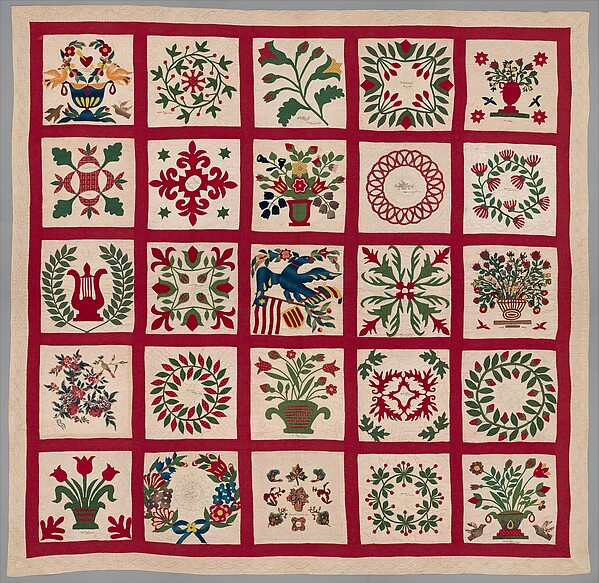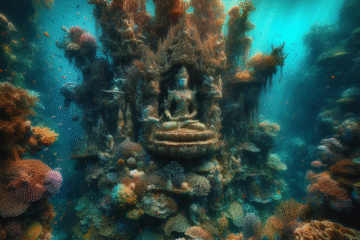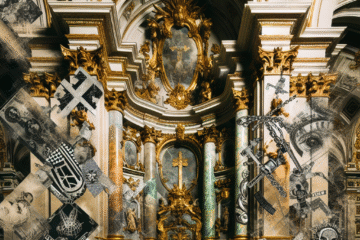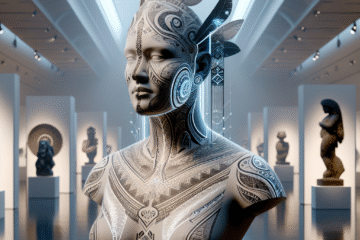
“
History will be kind to me for I intend to write it.
”
— Winston Churchill
Off the Wall: A History of Art Made to Be Touched
Introduction: Rethinking the Visual in Visual Arts
Art has long been considered a dominantly visual experience, bound to walls and gallery lighting. Yet, throughout history, artists and cultures across the globe have challenged this notion by creating works not just to be seen, but to be touched. This exploration into tactile art reveals a profoundly human dimension—artworks intended for the hand as much as the eye. From ritualistic carvings to sensory-driven installations, we trace a journey of multisensory engagement that questions what it truly means to perceive art.
I. Ancient Echoes: The Tactile Language of Pre-Columbian Civilizations
Long before the modern gallery dictated ‘Do Not Touch’ policies, ancient civilizations like the Maya, Olmec, and Aztec embedded touch into their visual culture. Stone reliefs carved with intricate glyphs and storytelling scenes were designed not only for communal storytelling but also as tactile objects navigable by hand. Sculptural storytelling created shared narratives accessible even through impaired sight. These objects served both didactic and spiritual purposes, offering a holistic sensory immersion aligned with the cultures’ cosmological beliefs.
For instance, calendar stones and stelae functioned as mnemonic devices—touchable histories that kept ancestral knowledge alive. The act of running fingers over sacred lines was itself a ritual, transforming these artifacts into sensorial bridges between the mundane and the divine.
II. The Medieval Cathedral: Touching the Divine Through Sculpture
Europe’s medieval cathedrals provide another chapter in tactile art history. Pilgrims journeying across Christendom often encountered sacred sculptures designed to be touched. From the worn feet of saintly statues to the polished hands of effigies, contact was believed to impart blessings or offer solace. These interactions were both spiritual and sensorial, reinforcing faith through physical immediacy.
The medieval belief in ‘contact relics’—objects imbued with holiness through proximity—further supports this tactile theology. Artworks were not passive objects to be viewed from a distance but active participants in a dialogue between matter and spirit. In this context, touch was not desecration but devotion.
III. Enlightenment to Industrial Age: Sense Meets Science
The Enlightenment and subsequent industrial periods marked a shift toward empirical inquiry and scientific categorization of the senses. Though visual supremacy grew in art with the rise of perspectival painting and museums, touch did not entirely vanish. In fact, the 18th and 19th centuries saw the rise of didactic tactile models for the visually impaired, particularly in the form of raised-line drawings and early iterations of Braille.
One notable figure is Valentin Haüy, who created embossed books for the blind as early as 1786, establishing a strong connection between touch, education, and accessibility. Although often not considered ‘art’ in the canonical sense, these relief books and maps laid conceptual groundwork for multisensory comprehension and the artistic reinterpretation of touch in the 20th century.
IV. Modernism and the Haptic Turn
By the early 20th century, artists began to actively reject purely optical aesthetics in favor of tactile associations. The Italian Futurists and Russian Constructivists embraced industrial materials with rough textures, emphasizing the sensation of surface. In the 1960s, Brazilian artist Lygia Clark urged viewers to physically manipulate her objects, transforming spectators into co-creators. In her celebrated “Bichos” (‘Critters’) series, hinged aluminum sculptures demanded interactive exploration; the art only ‘existed’ through user participation.
Similarly, artists within the Neo-Concrete movement, such as Hélio Oiticica, designed ‘penetrables’—immersive environments to be walked through and touched. These works embodied philosophical ideals of phenomenology, where perception extends beyond vision to incorporate the total body. The artwork, therefore, became a lived experience rather than a static image.
V. Contemporary Sensory Art and Technology: Touch in the Digital Age
Today, tactile art continues its evolution with a renewed focus on inclusivity and experiential richness. Artists like Ann Hamilton employ textiles, breath, and sound to craft multisensory installations. Her sprawling silk installations invite viewers to engage spatially and physically, creating a quiet reverence for texture and ephemerality. Meanwhile, Olafur Eliasson’s interactive pieces explore perception by blending temperature, movement, and physical presence.
Digital technology has expanded the horizons of tactile art. Haptic feedback devices and 3D printing technologies now enable artists to create touch-responsive installations or sculptural meshes informed by biological data. Contemporary works like “Please Touch the Art” by Andrew Myers mix raised portraits with Braille, bridging visual and tactile storytelling – especially empowering for blind and low-vision communities. These innovations are not gimmicks; they represent a philosophical shift toward art that engages the whole human sensorium.
Conclusion: A Future With Felt Meaning
The history of tactile art reveals a persistent undercurrent that subverts visual dominance. By considering works designed to be handled, pressed, explored, or felt, we confront deeper questions about the nature of communication, embodiment, and accessibility. In a time when digital culture often disembodies experience, the revival of touch-based art reminds us that hands, like eyes, are channels of insight. To touch art is not only to understand it differently—but perhaps, more completely.

Image description:
“Fontaine Water Ring, 1977. Conception dès 1972 de John Aldus, alias Gérald Ducimetière. tendant a créer l’illusion d’un méridien d’eau d’une longueur de 40’000 km et dont on ne voit qu’un segment fluide orienté sud-nord, en direction de l’échappée du lac. Le matériau de ce bassin-fontaine est du porphyre découpé géométriquement et assemblé pour former un cercle plane dont la diagonale en creux est marqué par une arête à l’image d’une boussole dont le spectateur est invité à prolonger la ligne de mire de Genève aux antipodes.”
Sources : Livre “Les fontaines de Genève” de Armand Brulhart
License:
CC BY-SA 4.0
Source:
Wikimedia Commons


